Written By Bobby. On Dec 02. In Workshop Layout
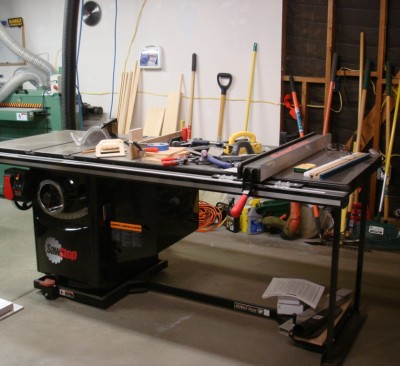
I don’t what I’d do if I didn’t decide to buy the mobile base when I bought the saw itself. This thing weighs hundreds of pounds and it takes quite a bit of pushing to get it rolling even with wheels.
Have you ever changed your mind about how a project will look? What about your shop? Have you arranged all your tools only to discover you didn’t leave enough outfeed room but didn’t feel like moving that bulky table saw? Do you avoid doing a complete cleanout of your shop because all your stuff is hard to move out of the way?
If you start your workshop design determined to make most of your stations mobile, you’ll have solved dozens of problems all at once. “But, if the machine is on wheels, isn’t that dangerous?” It doesn’t have to be mobile all the time. You can get casters that allow you to lock the wheels from rotating as well as from swiveling. Or you can build a mobile platform where the wheels fold out of the way, and deploy with a lever mechanism.
WoodChip Tip: If you don’t want to dedicate the time to build a bunch of mobile bases, you can buy them, or purposely choose machines that have mobility built in. I have had good luck with HTC mobile bases, and I’ve heard good things about Rockler’s mobile base (though you need to supply the 1.5″x1.5″ rails, but since you’re a woodworker you can customize it with a nice looking species of wood).
There are tons of reasons why you should require most of your stations to be mobile. Here are a few of mine:
- If I discover an infeed/ outfeed problem, I can unlock the wheels and rotate or slide the machine so I can make the cut and get on with it.
- I’m more likely to do a 100% clean-up of my shop floor since it’s easy to roll the stations to one side, clean, then roll everything to the other side and clean the rest of the shop.
- If I decide to tweak my shop layout, it’s instant.
- If I get a new machine, I can try different layouts with all the machines around it and see what works best before committing to adding dust collection hook-ups or electrical outlets.
- When I’m assembling a really large project, I can clear some space right away.
- If I needed to move (as I’ve done several times), I can roll the machines up a truck ramp much easier than dragging it or trying to bribe my friends into risking their backs and fingers.
- If I really, really needed to move my car into the garage for some odd reason, I can move all the heavy stuff easily to make room, even though my car is a creature of the outdoors so I don’t think that will happen very often.
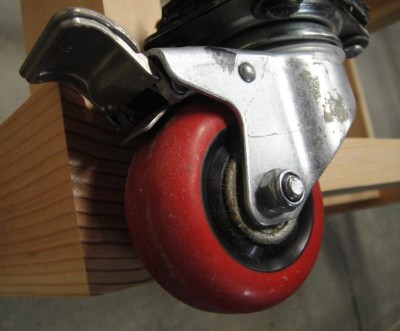
I prefer double-locking castors with rubber wheels. When you press the lever down with your foot, it prevents the wheel from turning and the caster from swiveling. Additionally, the rubber wheel prevents some of the machine vibration from transferring to the floor.
WoodChip Tip: When planning your dust collection, and even your electrical, make sure your machine has enough flex hose and electrical cord to move around several feet, and even rotate.
Many woodworkers have mobile bases for things like bandsaws, Len’s Torsion Box Assembly Table. Adding this mobility affords him the ability to move it where ever it needs to go so he has room to stage any project in the space around.
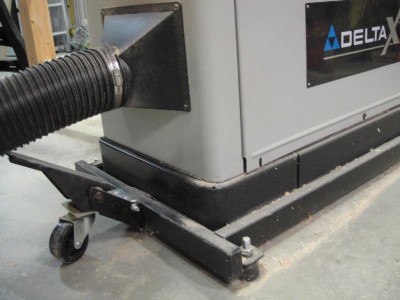
I bought the mobile base at the same time as the jointer, so during assembly I but the jointer cabinet in there with neoprene pads between the rails and cabinet to absorb some vibration.
When Not to Move
Now, just because you have all your stuff on mobile bases doesn’t mean you should have to move stuff all the time. Your design should minimize the need to move anything at all, including yourself. Trust me, you’ll be much happier, especially if you’re lazy. Besides, lazy people always invent the best stuff.
To make sure you minimize how often you need to move your machines, whether you’re using paper cut-outs or a Cad program to decide your shop layout, make a cut-out or draw 10-ft. boards or 4×8 sheets of plywood (to scale) so you can mimic sending them through the machines. Check for infeed and outfeed. Test it to be sure the stock won’t tip down while the cutters are still engaged with the material. If that happens, you need more outfeed or infeed support. Don’t depend on your hands to provide the support. You’ll forget and end up with a damaged piece or an injury. By the way, QUICK!–where is your first aid kit? Fire extinguisher?
WoodChip Tip: If you have overhead dust collection with flex hose slung vertically, make sure it doesn’t interfere with infeed or outfeed of sheet stock or long boards. I made that mistake with my table saw, and it’s pretty dangerous. I have to move the duct drop location to get the flex hose out of the way. It might look ok on paper, but take a look at where your duct connections are relative to how you’ll use the machine.
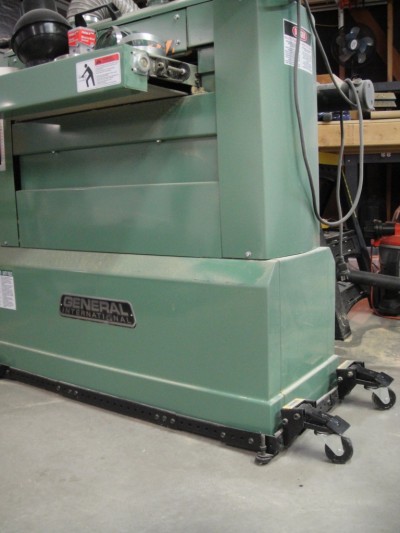
Heavy machines like my drum sander require frequent moving around to make room for infeed and outfeed of stock, especially long glue-ups.
Resolve now to require that all your heavy work stations have the capability to roll around when needed. Whenever you buy a tool, automatically get a mobile base with it. That’s what I did with my drum sander, jointer, and table saw. When I finally buy my bandsaw (I know, I shoulda bought that first) I’ll get the mobile base with it and assume it’s part of the cost to save up for. Integral to my assembly table and workbench designs are double-locking casters. I put them on my new planer table as well. Unless you plan on permanently leaving everything exactly where you first put it, you won’t regret the mobile option.
Where has lack of machine mobility frustrated you? It’s easy to forget about it when you leave the shop for the day, so keep an index card or small notebook in your pocket and write a “buy list” that includes a mobile base or two.
Connect with me on Facebook, and follow me on Twitter for more ninja tips to Optimize Your Woodshop!
Gotta get more clamps,
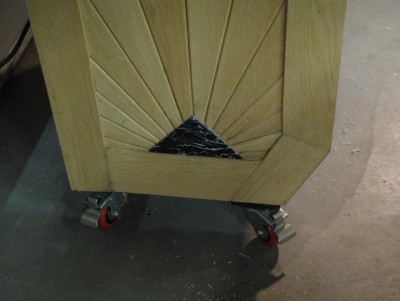







 How I went from a cluttered and disorganized shop to a super-productive layout with a convenient dust collection and electrical set-up.
How I went from a cluttered and disorganized shop to a super-productive layout with a convenient dust collection and electrical set-up. 


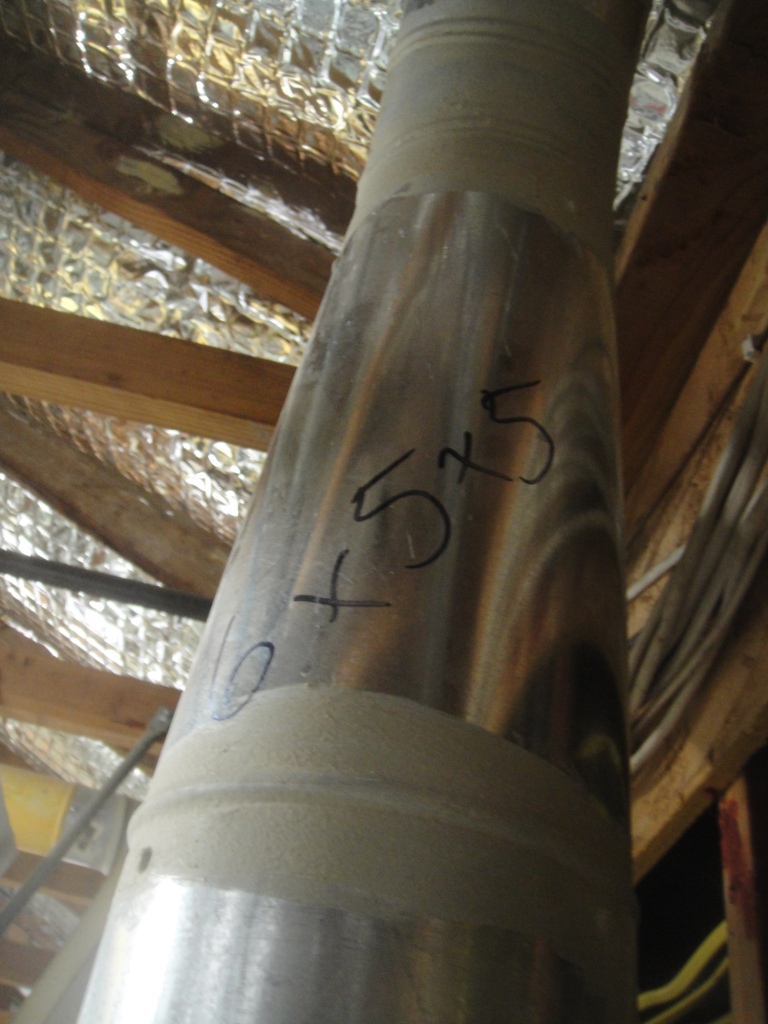
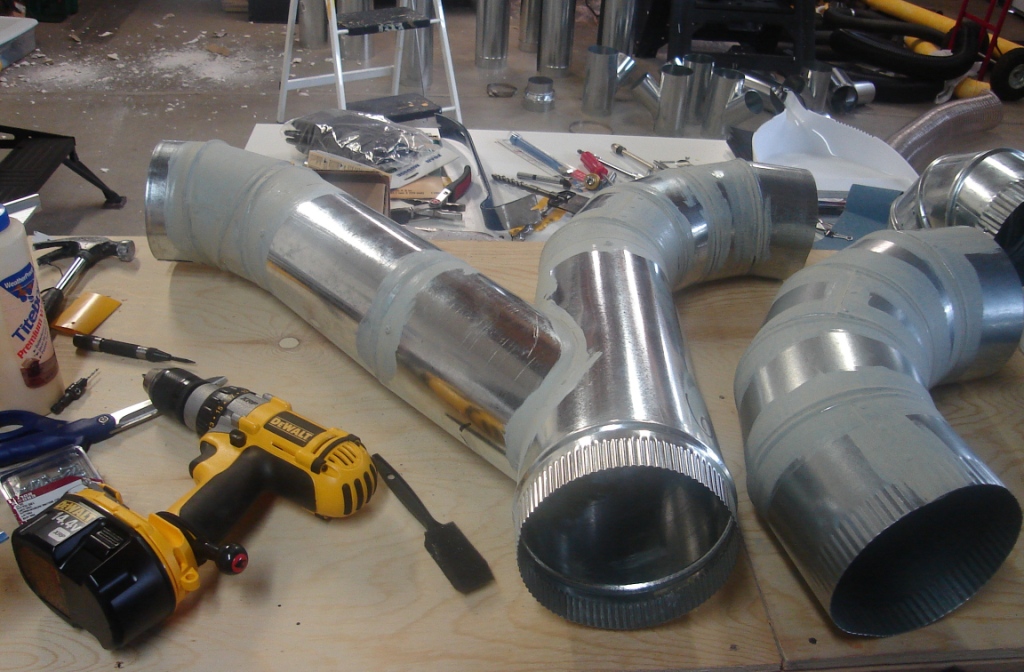
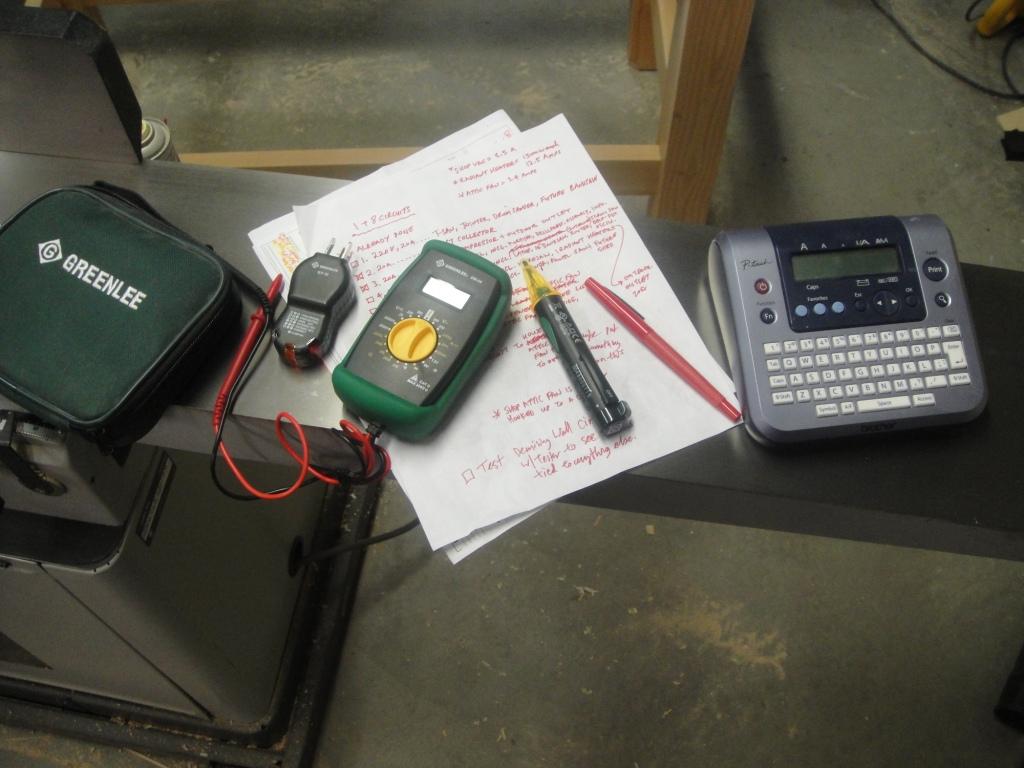




I’m in the process of putting a dust collection system in my shop. I have a Jet DC-1100VX with Canister Kit collector and will exit the collect with a 6″ sheet metal duct system and then reduce to 5″ for my two main lines feeding into the system. But, since I live in Alaska, I’m having trouble finding a company that sells 5x5x5″ wyes to branch off the main lines for my feeder lines into each piece of machinery. Please help!
If I cannot locate these wyes would it be better to use two 4″ lines as the main two lines. This will cut down on the CFM’s.
Lou